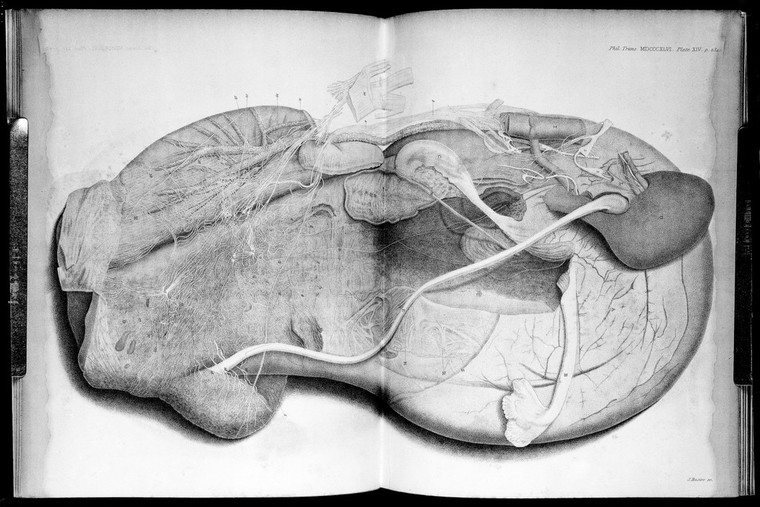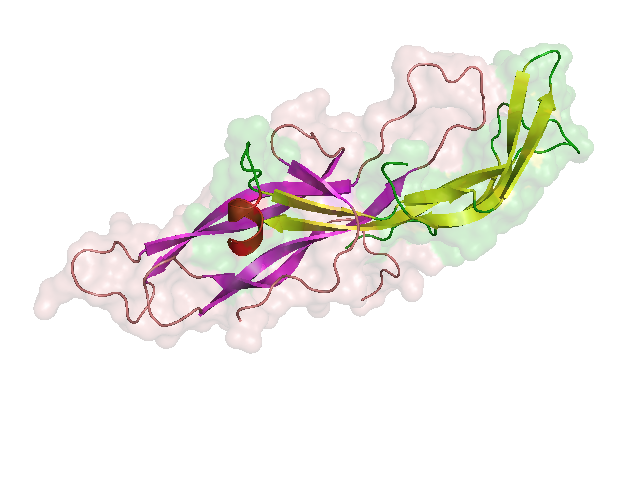
This week we had our 22-week ultrasound, the detailed scan for all the things no one wants to think about: cysts in the brain, malformed heart chambers, exposed vertebrae. Will (we’ve started calling him Will) is moving a lot now, rotating and arching his back, kicking his legs and arms. In my mind he’s like a boulder in one of the flash floods carving up California’s hillsides right now: gaining mass as he plummets downhill, the gravitational pull between us rapidly increasing.
I’ve been hearing a lot about what’s impossible for human mothers: showers, sleep, exercise, “a single uninterrupted thought.” It stresses me out, so instead of setting up a baby registry or figuring how we’ll afford childcare, I’ve been escaping by learning about reproduction in other species. For example: pregnant bats. How do they fly?
With difficulty, I learned. Baby bats weigh up to a third of their mothers’ weight by the time they’re born. Gravid bats fly lower and slower; I can relate to that. Once they’re born, baby bats sometimes bite their mothers’ nipples to stay attached while she flies around hunting for insects. (I’m pocketing that tidbit for later, when I’m feeling sorry for myself, and making a note not to bother the roosting mother bats in our storage shed this summer. Poor bats.)
After gravid bats, I moved on to other animals. Soon I was deep into the evolution of human chorionic gonadotropin (hCG) — the hormone most pregnancy tests detect. Bustling through the bloodstream like a small-town gossip, hCG is the first signal from the placenta to the rest of the body. It announces that a fertilized egg has implanted in the uterine lining; tells the body to halt its next menstrual period; initiates construction of blood vessels that will deliver nutrients to the fetus. It stays busy throughout pregnancy, suppressing the immune system so the mother’s body doesn’t reject the fetus, and relaxing the uterine walls to accommodate the growing fetus, among other tasks.
Before the advent of at-home pregnancy tests in the 1960s, scientists used to inject human urine into Xenopus frogs to tell if a woman was pregnant. If she was, within 5-12 hours the hCG in her urine would induce the frog to produce a cluster of eggs.

African clawed frog (Xenopus laevis)
I’d assumed hCG was very ancient, considering all the jobs it has. But it’s quite new, evolutionarily speaking. About 55-35 million years ago, a part of the gene that makes another key reproductive molecule, luteinizing hormone, got accidentally duplicated in one of our early primate ancestors. The result was a new gene that makes a slightly different molecule — chorionic gonadotropin (CG). We share this newer hormone with New World monkeys like spider monkeys and capuchins, as well as Old World monkeys and apes, but not with earlier primate relatives, like lemurs and bushbabies.
Here’s where things get interesting, at least to me: After the initial duplication, additional mutations to the gene further changed CG’s chemical structure, festooning it with additional sugars and amino acids that make the molecule linger longer in the bloodstream. Scientists estimate that the original variant of the CG protein had a half-life of about 2.5 hours. By the time it had evolved into the version humans carry, hCG, that period had extended to 36 hours.

The longer a hormone persists in the blood, the more potent it can be. As CG’s half-life lengthened, it appears to have fundamentally changed how the primate placenta develops. Fingerlike villi that increase the placenta’s surface area expanded, for example, as did spiral-shaped arteries that supply blood to the uterus.
Eventually these changes enabled the mother’s blood to come into direct contact with the fetus, a type of placental development called hemochorial placentation that makes the delivery of nutrients and oxygen to the fetus more efficient. Although there are lots of explanations for why primate brains got bigger and more complex, this increase in available energy during gestation may have been one factor that helped usher in a new era of brain expansion, scientists speculate.
I could do without the nausea that some suspect hCG causes by stimulating certain neurons in the brainstem. But it’s hard not to admire the molecule’s ability to multitask. With little-to-no conscious effort on my part, hCG is remodeling my and Will’s internal organs to ensure that he gets what he needs. Friends tell me I’m doing the work here, but I think that’s giving me much too much credit. It’s hCG that’s largely building and sustaining this new human — and who knows — shaping the future of primate intelligence in the process? I’m just a curious and increasingly pliant participant, wondering what comes next.
One thought on “Getting Gravid”
Comments are closed.